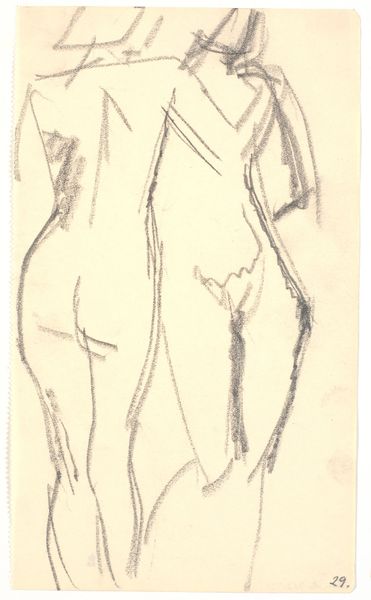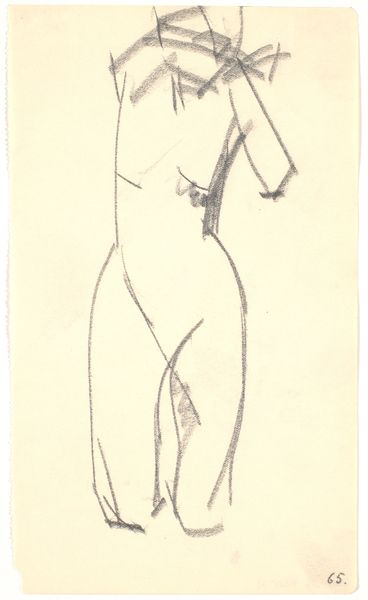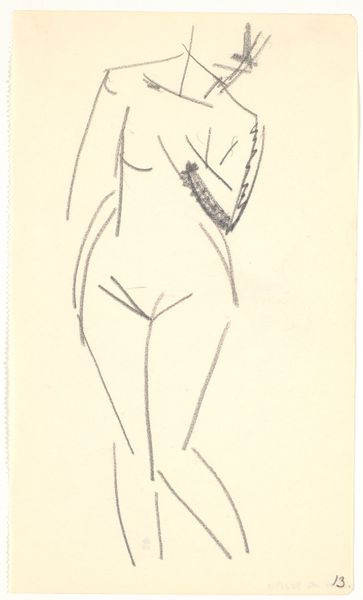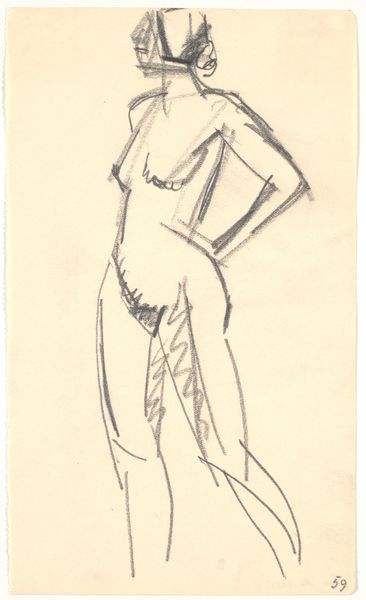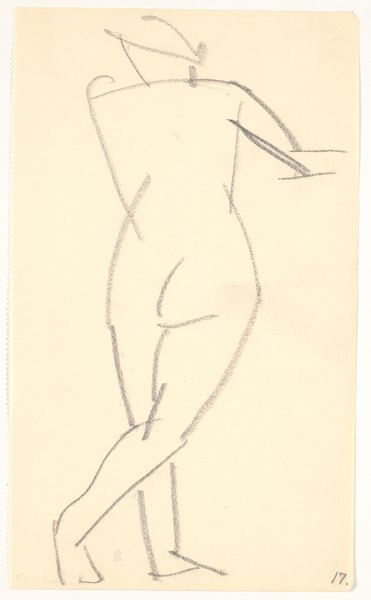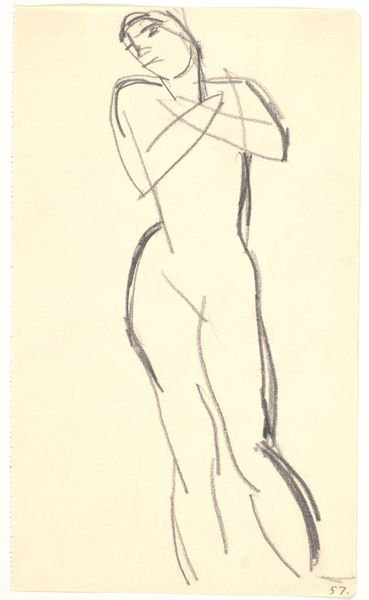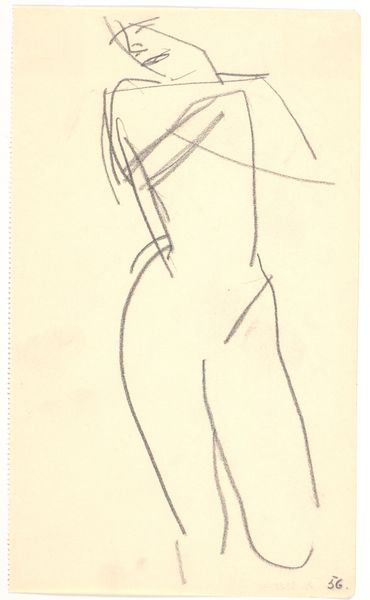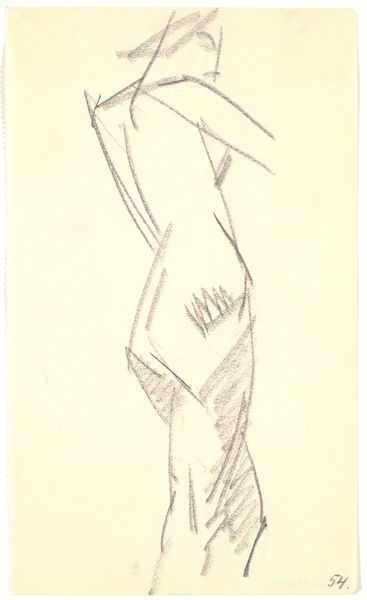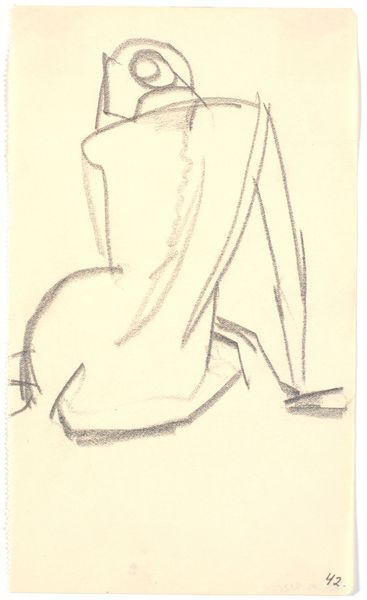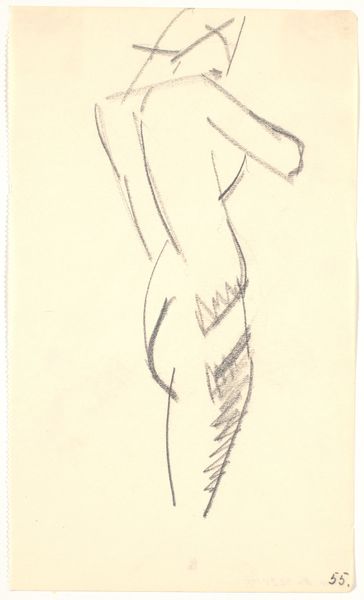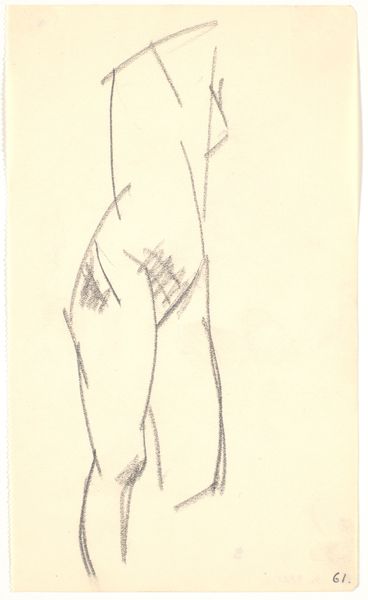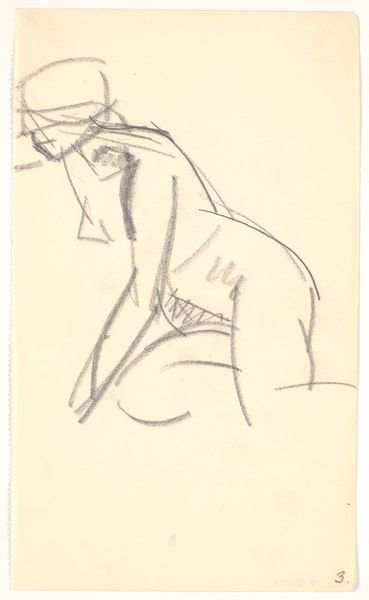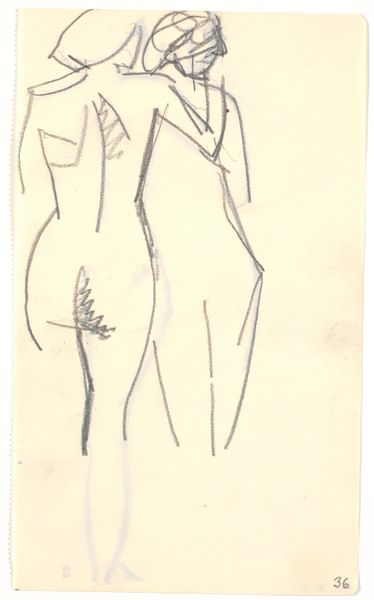
drawing, pencil
#
portrait
#
drawing
#
figuration
#
pencil
Dimensions: 209 mm (height) x 124 mm (width) (bladmaal)
Editor: So here we have "Seated Model", a pencil drawing from around 1914-1915 by Karl Isakson. The first thing that struck me was the… the angles. Everything feels a little bit askew, like she’s both present and abstracted. What do you see in this piece, in terms of its sort of…fragmented feel? Curator: Ah, yes! That feeling of gentle unease, I recognize it well! You know, sometimes I feel like I'm drawn and quartered myself, especially before my first cup of coffee. Isakson is dancing a subtle tango with Cubism here, isn’t he? Not full-blown fragmentation, but these sharp planes and that unsettling gaze…it hints at the shifting perspectives and anxieties simmering just below the surface during those years, before World War I fully erupted. Almost like he's X-raying the sitter’s…soul. Do you see what I mean? Editor: I think so, yes. There's definitely a raw emotion conveyed with such minimal lines. And now that you mention it, her expression...it’s definitely not complacent. Curator: Precisely! And look at the almost brutal directness of the strokes. Isakson, like many artists then, was searching for a new language. He wasn't content with just replicating reality; he was digging for something truer, something…felt. Almost as if it were a self-portrait, hiding behind a mask! Now, if this drawing could speak, I wonder what stories it might whisper. Editor: It really makes you wonder. This was quite insightful, thank you. Curator: My pleasure. Every artwork is like a riddle, really – waiting to be teased out. Perhaps it’s a fragment of the artist that survives through their drawing, a fragment that calls for you to listen… closely.
Comments
No comments
Be the first to comment and join the conversation on the ultimate creative platform.
